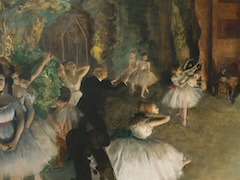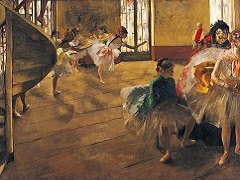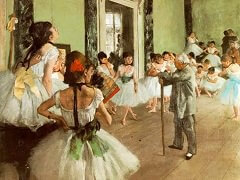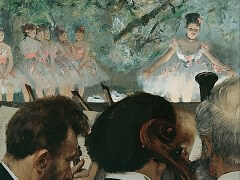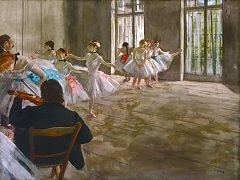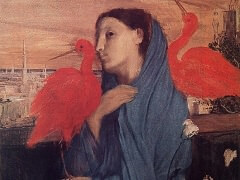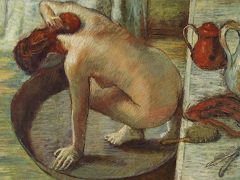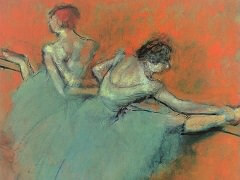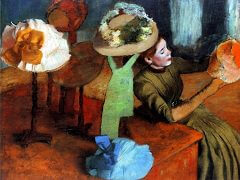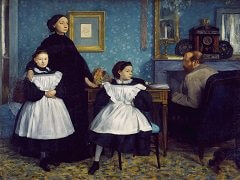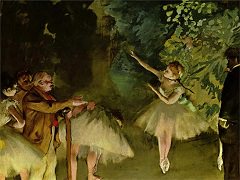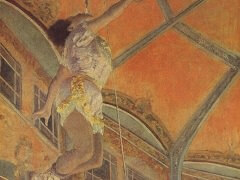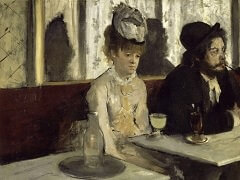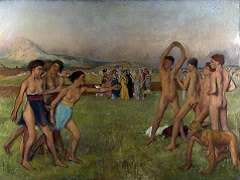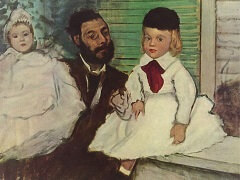The Dance Foyer at The Opera, 1872 by Edgar Degas
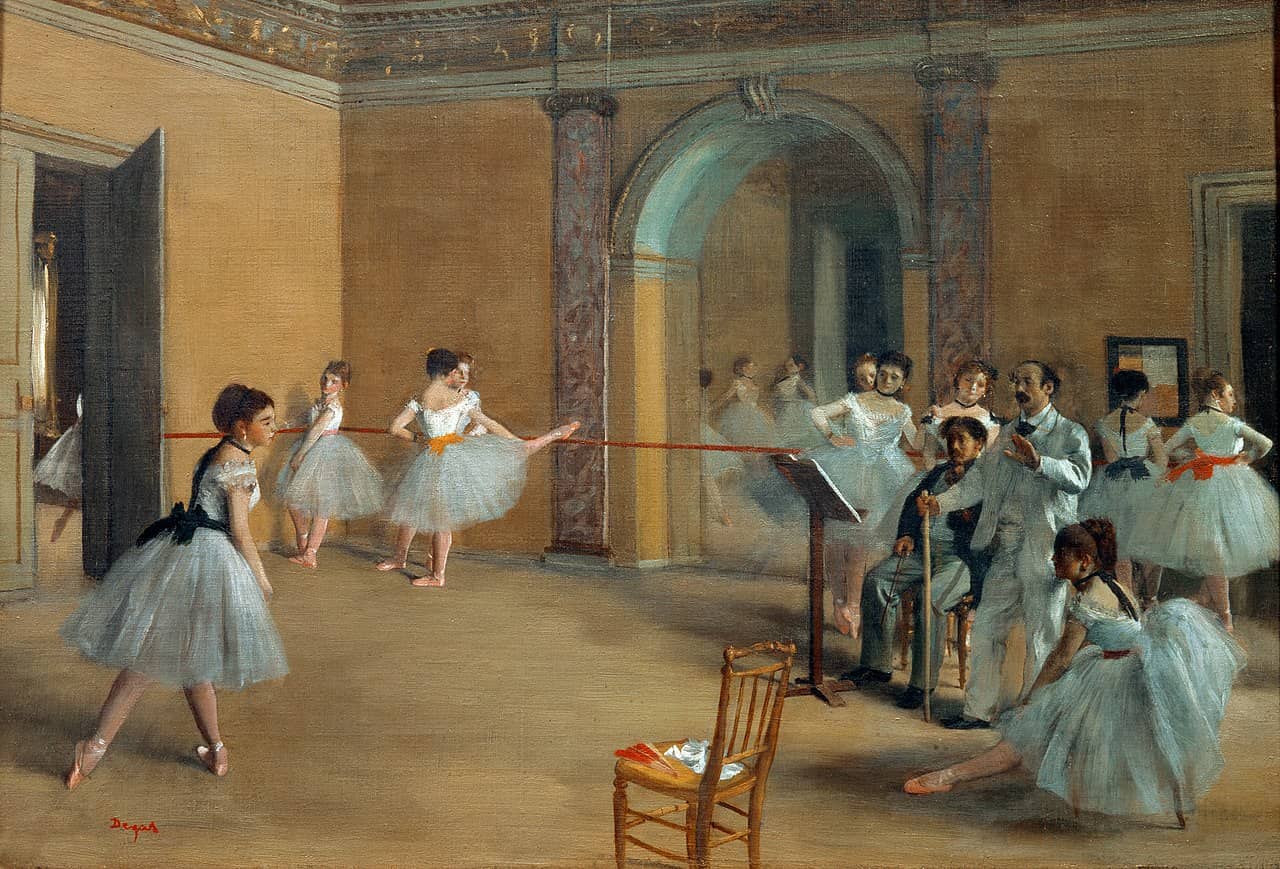
Degas' first treatment of the ballet dancers at the Paris Opera was coolly objective and most carefully studied. Each figure was first sketched and then combined with others into the broken frieze of dancers which stretches in a subtly varied manner across the whole picture. He was not ready, yet, to set his figures in motion but preferred to represent them as taking their preparatory positions or practicing at the bar.
In a later canvas, The Dancing Class, painted about 1876, a detail of which appears on the cover of this book, we see how quickly the artist advanced into the world of movement and casual effect which he was to make his own. The canvas is larger in size, broader, freer, and lighter in treatment, full of many impressions gathered into a remarkably complex design. What intense studv has gone into each ballerina! Each is caught in an individual pose and gesture, and for the first time the artist has attempted a figure in action. All the bustle and confusion of many movements is caught with an almost cameralike fidelity; Degas cuts off one figure by another, overlapping forms masterfully, but so shrewdly are they fitted together that there is no real confusion.
Perspective, in this later picture, is cultivated by the slanting floor and the diagonal line of dancers in the left foreground, continuing back into the farthest corner, where some of the mothers are watching the class, their street clothes furnishing a foil for the light, graceful costumes of the dancers. Here at last was something new in art - a surprising view of a little-known outer world - composed with the grace and authority of an old master.
Beturning to the more static Louvre picture opposite, we note that the details of the architectural setting are used to frame groups of figures and lend stability by repeated verticals and horizontals. Space is suggested bv the open doorway on the left and the shifting reflections in the central mirror, as well as by the chair in the foreground which helps to create an illusion of depth. The light, entering from the right, falls clearly across the scene, and a repeated white is contrasted with dark notes in the sashes, neckbands, and the suit and music stand of the violinist. A recent student of the ballet finds that Degas has enlivened the ballet costumes of the day with bright sashes and black ribbons of his own invention; these little touches combined with the red line of the practice bar add a decorative charm.

